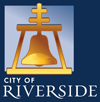Before, during, and after an emergency, everyday people come together to help each other be better prepared, response to an emergency, and rebuilding the community. Getting involved will not only help you and your household, but it can also be critical to getting our community back on its feet.
Here are just a few things you can do to get involved:
- Take a class from us!
- FEMA’s Until Help Arrives – Life-threatening emergencies can happen fast and emergency responders aren’t always nearby. You may be able to save a life by taking simple actions immediately. You Are the Help Until Help Arrives.
- Listos Aware & Prepare – Spanish for Ready, Listos is designed to reach out to populations that are more vulnerable during disasters.
- Join the Community Emergency Response Team (CERT) – Teaches skills that may be needed during an emergency. Disasters often overwhelm emergency services, and CERT members will be there to use life-saving skills for those in need until first responders arrive.
- Take a class from our partners.
- CPR/AED/First Aid – An estimated 475,000 people die from cardiac arrest each year and knowing CPR and how to use an AED can double or even triple someone survival chances. In addition, first aid skills can help treat an injury until first responders are able to arrive. Once your CPR-trained, you can be notified to someone near you needing help using the PulsePoint app.
- Stop the Bleed – With 3 quick actions, you can be trained to save a life. The number 1 cause of preventable death after injury is bleeding. That’s why we want to train you how to STOP THE BLEED®.
- National Weather Service Skywarn - Anyone can become a Weather Spotter for the National Weather Service. All it takes is an hour or two of training.
- Other ways to get involved:
- ShakeOut – The Great California ShakeOut is an annual opportunity to practice how to be safer during big earthquakes: "Drop, Cover and Hold On."
- Give Blood
- Listos California
- USGS Did You Feel It? – Did you feel an earthquake? Reporting it to the USGS can help them map the geology of your area, which will help them estimate which areas will be impacted the most during large earthquakes. With this critical information, governments, businesses, organizations, and people can take action to prevent and lessen damage from an earthquake.
